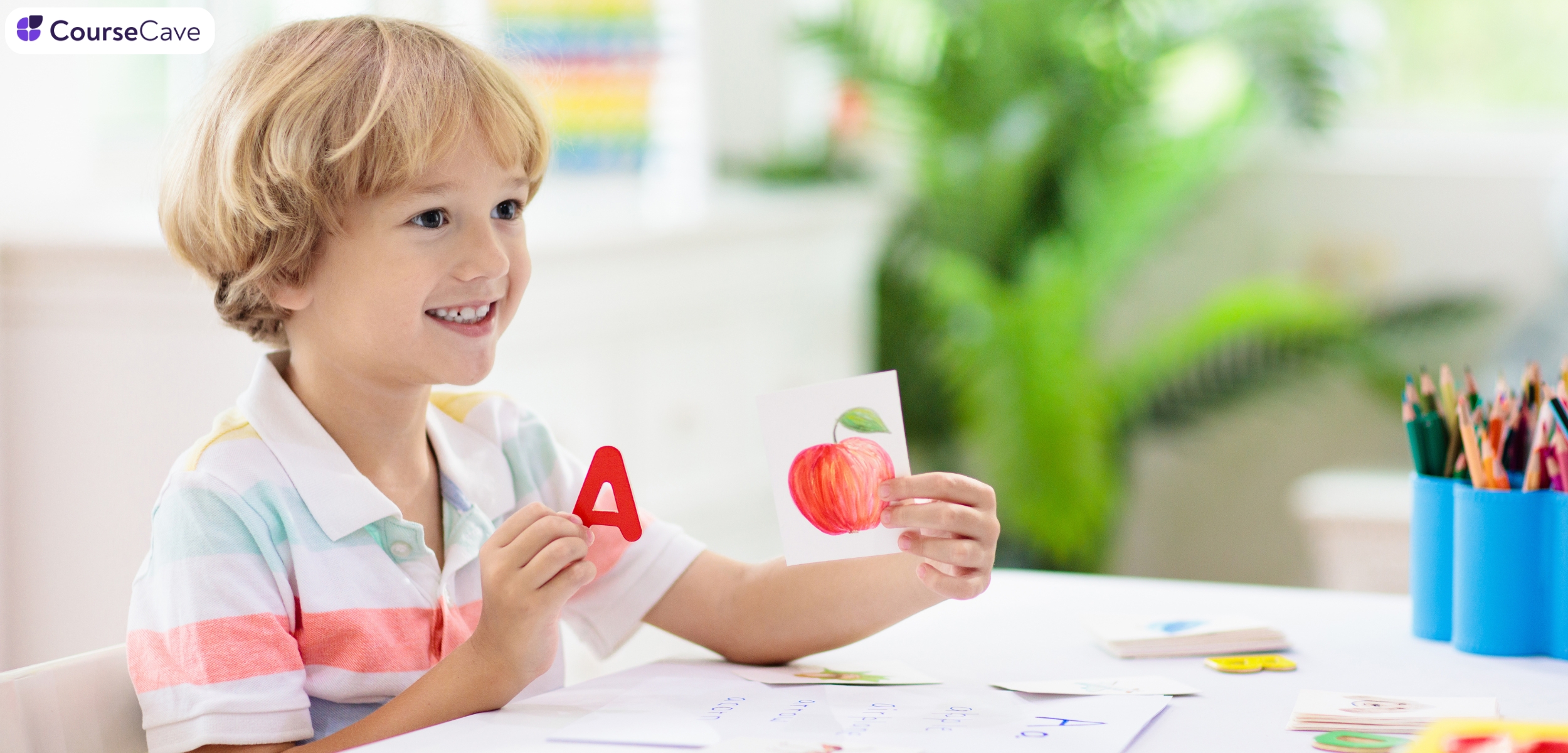No products in the basket.
Have you ever wondered why some letter combinations sound different than what you’d expect? This is where digraphs come in. So, what is a digraph in phonics? In simple terms, it’s when two letters join together to make one sound. It plays a key role in teaching children how to read. But understanding this idea in phonics can feel tricky at first, especially if you are new to phonics teaching methods. Thus, it’s important to break it down in a clear way.
Why is a Phonics Digraph Important?
When children learn to read, they first learn the sounds of individual letters. However, as they advance, they encounter more complex combinations of letters that represent different sounds. A digraph in phonics is a crucial building block for this next step. By learning these pairs of letters, children can better grasp how sounds work together to form words, which improves their reading fluency. For example, without knowing that “ch” makes a sound different from just “c” or “h” separately, children may struggle to read simple words like “chip” or “chat.”
Therefore, this helps children connect letters to sounds more smoothly, enabling them to understand language more naturally.

Examples of Common Phonics Digraphs
Let’s explore some of the most common digraphs in English. Here’s a list of a few that children will likely come across:
- sh: As in “shop” or “ship.”
- ch: Found in words like “chip” or “chair.”
- th: Appearing in both “thin” and “this.”
- ph: Like in “phone” or “elephant.”
- wh: As seen in “when” or “where.”
These are often taught early in a child’s reading journey because they appear frequently in everyday language. Moreover, they follow basic rules that make them easy to spot. However, some of them may cause confusion due to their multiple sounds, such as “th,” which has a soft sound in “thin” and a hard sound in “this.”
How Digraphs Are Taught in Phonics
In phonics instruction, teachers often introduce digraphs once children have mastered single-letter sounds. Thus, it’s important that students understand the relationship between sounds and letters. When teaching this, teachers may use visual aids, such as flashcards, that display both the letters and a word that uses the digraph. For instance, a card might show “ch” next to a picture of a chicken.
Phonics programs also frequently use songs or rhymes to reinforce these sounds. As a result, children can engage with these sounds in a fun, interactive way. Therefore, making the learning process smoother and more memorable.
Moreover, practising blending digraphs into words is key. For example, teachers will often ask students to sound out words slowly, blending the letters together. They might break down the word “chat” into the sounds “ch-a-t,” and then say the word more quickly, showing how the sounds combine.
Types of Digraphs
To understand this more deeply, let’s look at two main types: consonant and vowel digraphs.
Consonant Digraphs
These digraphs occur when two consonants come together to make one sound. As mentioned earlier, common consonant digraphs include “sh,” “ch,” and “th.” These are often easier for children to recognise because the sounds they produce are more distinct.
Vowel Digraphs
Vowel digraphs are when two vowels combine to form a single sound. Examples include “ea” as in “seat” or “ee” as in “feet.” These can be more challenging for children since the sounds are less obvious. For example, the “ea” in “seat” and the “ea” in “bread” sound different, even though they use the same letter combination.
Thus, teaching vowel digraphs often involves more repetition and practice.

Digraphs vs. Blends: What’s the Difference?
While learning about it, it’s common to mix them up with blends. However, there’s a key difference. A blend is when two or more consonants are placed together, but each keeps its own sound. For example, in the word “blend” itself, you can hear both the “b” and “l” sounds separately. In contrast, a digraph combines two letters to make one sound, like “ch” in “chip.”
Thus, knowing the difference between a digraph and a blend helps in teaching phonics more effectively. As a result, children won’t confuse the sounds or struggle with pronunciation.
Why Does This Matter for Early Literacy?
Learning digraphs is a step towards mastering reading and writing. As children progress through school, they will encounter many more complex words. If they don’t understand this early on, they may struggle with spelling or reading longer words. Therefore, teaching this early on sets a strong foundation for literacy. It equips children with the tools they need to break down words and sounds efficiently.
Moreover, understanding it improves their ability to decode unfamiliar words. When a child sees an unknown word, they can use their knowledge of digraphs to sound it out. For example, knowing that “ph” sounds like “f” can help them read a new word like “graph.”
How to Support Your Child in Learning Digraphs
There are several ways you can support a child’s learning of digraphs at home. Here are a few tips:
- Read together: When you read with your child, point out words with it and practise sounding them out.
- Use flashcards: Flashcards with both pictures and words can help reinforce digraphs visually.
- Play phonics games: Online games or board games that focus on phonics can make learning fun and engaging.
Moreover, you can practise saying words with it out loud, focusing on how the letters sound together. As a result, your child will begin to recognise these patterns more naturally.
Conclusion: What is a Digraph in Phonics?
So, what is a digraph in phonics? It’s a combination of two letters that come together to make one sound, playing a key role in teaching children how to read. From “sh” in “ship” to “ch” in “chip,” digraphs help young learners decode words and sounds more easily. Therefore, understanding it is essential for developing strong reading and spelling skills.
By practising these with your child and supporting their phonics education, you help lay the groundwork for their future success in literacy. Furthermore, learn more about phonics from Course Cave by enrolling in the Phonics Teaching Course.



